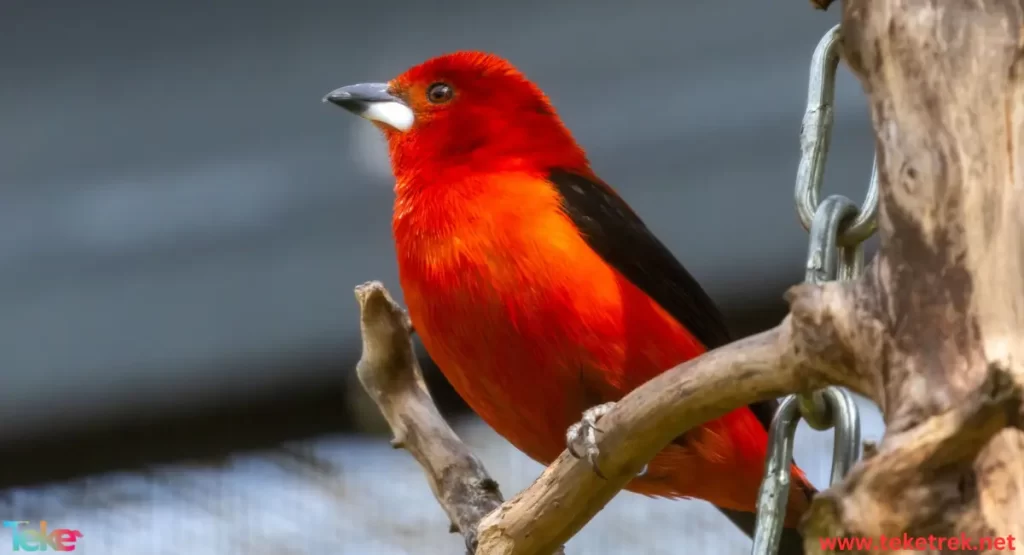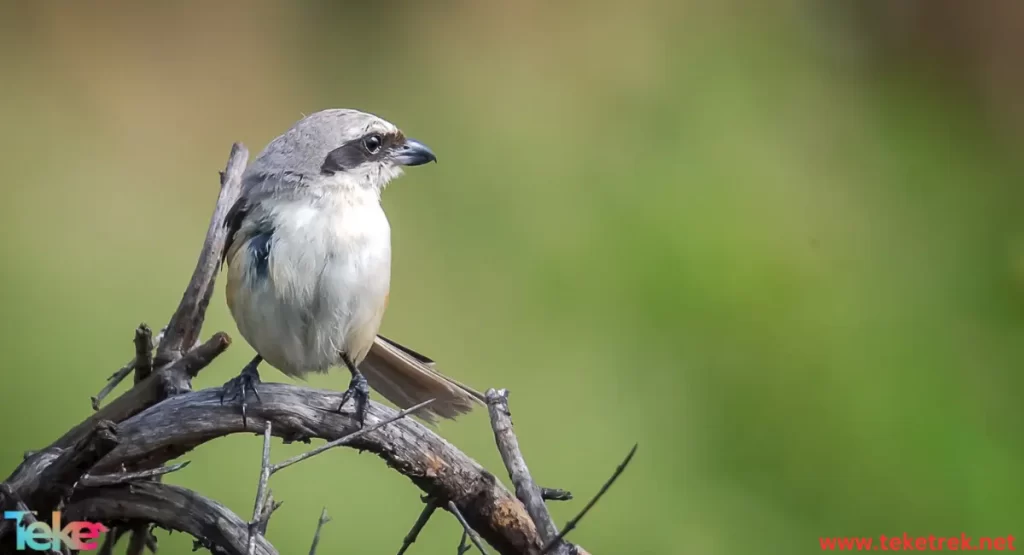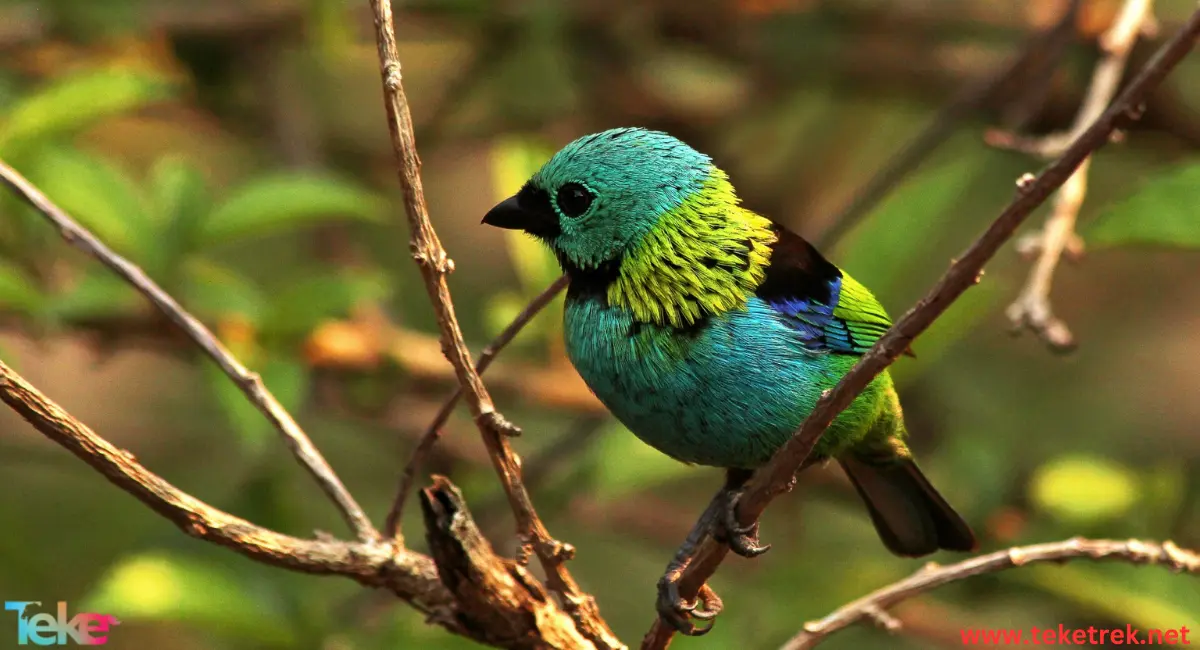The Tanager bird is a medium-sized American songbird. It is the only bird that possesses entirely red plumage. It has a very distinctive appearance.
Let’s learn more about it from teketrek.

External Appearance of Tanagers:
Tanagers belong to the Passerine order of birds.
Most Tanagers range from 10 to 20 cm in length.
They have short necks, beaks of varying shapes, slightly serrated and hooked.
Tanagers are distinguished by the brilliance of their plumage. Red, yellow, green, blue, and black are among the primary colors, sometimes arranged in striking patterns.
Both sexes may exhibit similar colors, or females may be duller than males.
Tanager Bird Habitat:
Tanager birds can be found in the following countries: Canada, the United States, Costa Rica, Guadeloupe, as well as Nicaragua, Antigua and Barbuda, the Bahamas, Barbados, Belize, and Bolivia.
Tanagers prefer to live in temperate broadleaf and mixed forests, as well as in moderate pine forests or moist tropical forests.
Scarlet Tanagers breed in eastern North America and spend winters in northwestern South America.
They inhabit vast areas of deciduous forests, especially oak trees, across eastern North America.
Tanagers can be found in small contiguous forests and sometimes in vast orchard shade trees in suburban areas, parks, and gardens.
During the winter season, Scarlet Tanagers are found in mountain forests at the foothills of the Andes.
Tanager Bird Habits and Lifestyle:
Tanagers are considered social birds. Outside the breeding season, they often join various flocks of birds.
They are active during the day but often remain elusive, moving high in the trees in search of food. Sometimes Tanagers fly to catch insects in a distinctive hunting style, using this feeding strategy to catch flying insects in the air.
Tanagers migrate in April, beginning to arrive at breeding areas by May, then moving southward in mid-summer.
Diet of Tanagers:
Tanagers are primarily insectivores.
They mainly feed on insects such as bees, wasps, ants, butterflies, beetles, as well as aphids, plant lice, crustaceans, termites, and grasshoppers.
Sometimes it eats caterpillars, earthworms, spiders, and fruits.
Breeding of Tanagers:
They are monogamous and when they form pairs they stay together for one breeding season.
Male Tanagers arrive at their breeding grounds from mid-May to early June. Females generally arrive several days or a week later.
Nesting and egg-laying usually occur within less than two weeks of the adults’ arrival.
The nest is typically a shallow open cup placed on a horizontal tree branch among the leaves. It is made of twigs, roots, and grass stems, lined with soft grass or pine needles.
Female Tanagers lay 4 light blue eggs, often with a light green or white tinge.
The incubation period lasts between 11 and 14 days.
Chicks hatch blind and helpless, weighing around 3.97 grams.
Fledglings leave the nest at 9-12 days old, and they fly proficiently when they are a few weeks old.
Threats to Tanagers:
The population of Scarlet Tanagers is declining due to exposure and famine, especially during exceptionally cold or wet weather in eastern North America. In some areas, habitat fragmentation also contributes to their decline.
In places where forest fragmentation occurs, Tanagers suffer from high predation rates. Often, Tanagers die from colliding with human-made objects, including television and radio towers, buildings, and cars.

Frequently Asked Questions about Tanagers:
Where can Tanagers’ nests be found?
Tanagers build their nests in the treetops, reaching heights of up to 75 feet.
What are the most common species of Tanagers?
There are multiple species of Tanagers, including:
- Summer Tanagers
- Scarlet Tanagers
- Western Tanagers
- Liver Tanagers
- Flame-colored Tanagers
In conclusion, Tanagers are among the most fascinating birds in the avian world, thanks to their vibrant colors and beautiful designs. These lively and colorful birds add a distinctive aesthetic tone to the environments they inhabit. The presence of Tanagers in forests and natural areas reflects the diversity of plant and animal life and indicates the health of the ecosystem. Therefore, we must work to protect their habitats and conserve biodiversity to ensure the continued existence of these wonderful birds in our world.
Sources:





